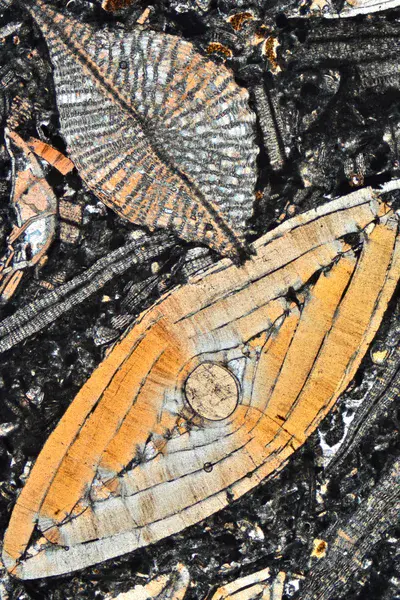
Tertiary Flying Saucers
by Bernardo Cesare, Department of Geosciences, University of Padova, Padova, Italy
Polarized light photomicrograph of a thin section of a fossiliferous limestone from Lake Garda, Italy.
These flying-saucer-looking objects are in fact the fossil skeletons of Nummulites, unicellular organisms occupying an important ecological niche of shallow and warm marine habitats during the Tertiary period, after the disappearance of dinosaurs.
After their death, these variously and elegantly crafted, disk-shaped shells accumulated on the sea floor, forming thick piles of sediments, subsequently lithified into limestones.
Nummulite-bearing limestones are widespread around the Mediterranean. In Egypt they were used for the building of the pyramid of Gizah. In northeastern Italy these rocks were intensely quarried as ornamental stones since Roman times and used in villas, palaces and for statues by artists such as Palladio and Sansovino.
Width of view 5,4. mm.
Categories
Location
Tags
Colours
Image properties
1667 × 2500 px;
image/jpeg; 1.8 MB
Camera:
Nikon D5500
Taken on 20
January
2017
Submitted on 8 February 2018
Licence
Creative Commons Attribution-NonCommercial-NoDerivs 3.0 Unported (CC BY-NC-ND 3.0)
Credit
Bernardo Cesare (distributed via imaggeo.egu.eu)
Share
Appreciate
Report